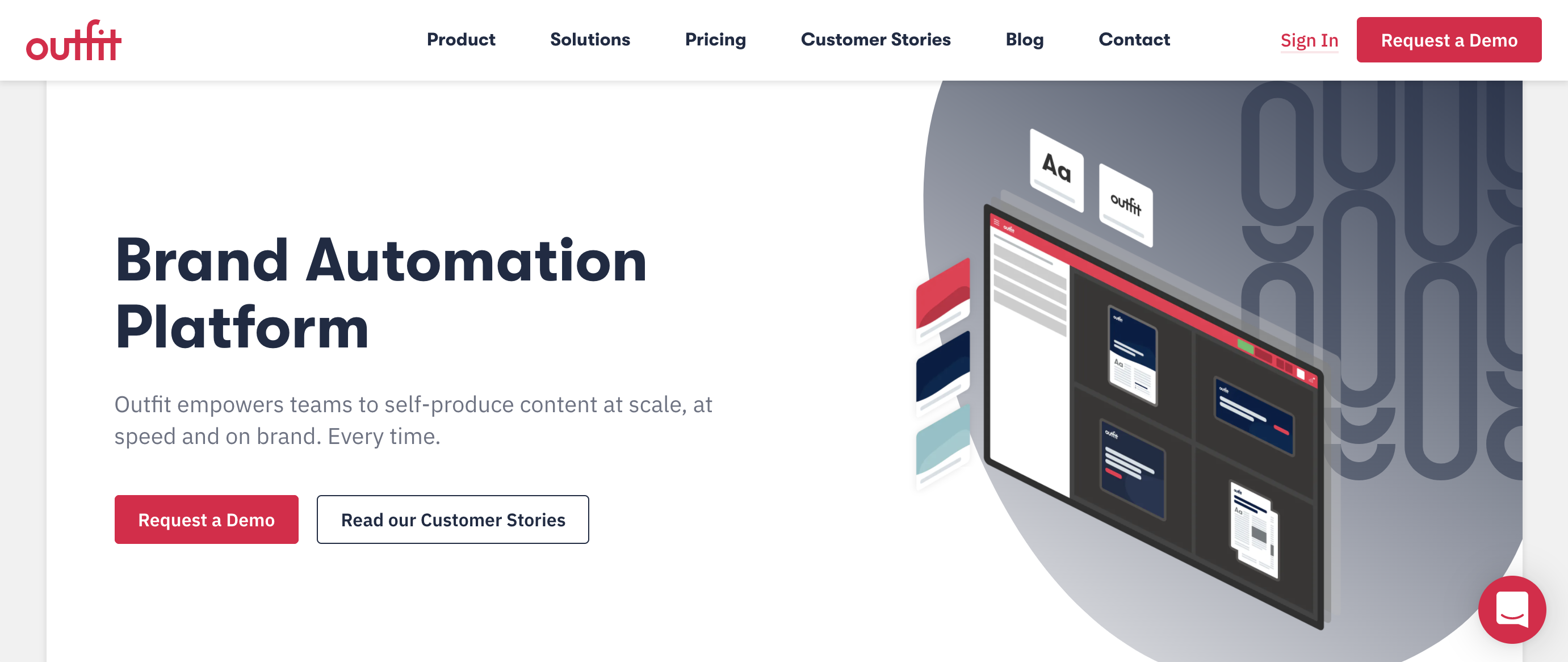Automation is set to be broadly applied in marketing in 2020 because it provides solutions to many of the challenges we are facing in these extraordinary times. Close to 1 in 2 CMOs have had their budgets cut due to the pandemic: advertising spend has dropped, team sizes are smaller, and many of us are still working remotely as we adjust to the ‘new normal’. Marketing leaders are identifying the costs that can be eliminated, the investments that must be protected, and those where greater efficiency and ROI can be delivered.
To come out of this pandemic-induced recession well, it’s been well established that marketers need to maintain their brand’s share of voice if they can, while looking for administrative and operational efficiencies.
Digital transformation is gaining pace as organisations everywhere use technology to work smarter -- because they must.
By automating repetitive, predictable or time-consuming tasks, marketing teams can free up time to spend on important strategic work: in fact, optimising productivity is often seen as the top benefit of automation, according to Adestra’s State of Marketing Automation research.
They can also achieve more with their existing resources -- sometimes much more -- with 41% of marketers using it to improve ROI.
And by eliminating human error, automation can also reduce marketing risk.
The upside of automation is considerable: automating routine tasks can reduce the time spent on them by 50% -- and often much more. For many marketers, that’s an extra day or two per week to work on strategic marketing tasks; for others, it’s even more.
Many marketing teams haven’t scratched the surface of the benefits automation can bring. But according to the Digital Marketing Institute, almost one in two (44%) of marketing leaders believe automation will become more important as a skill in 2020.
So if there’s ever been a year to automate repetitive or time-consuming marketing tasks, this is it. Here are some areas that should be at the top of the list of marketing tasks to automate this year.
-
Lead flow processes
Two in three organisations now have email marketing automation software in place, with continued growth expected. Most marketing teams are now automating the sending of emails and email responders, and using email to automate content delivery.
 But many teams are under-utilising their automation tools or otherwise failing to realise the full benefits when it comes to lead flow management.
But many teams are under-utilising their automation tools or otherwise failing to realise the full benefits when it comes to lead flow management.
Generating leads can be difficult and expensive. Automating lead flow processes helps ensure organisations make the most of those leads that they collect without absorbing valuable team resources in the process. Leads can automatically be uploaded to your CRM and segmented for nurture or flagged to your sales team, among other benefits.
You can automate the movement of leads through your sales process by automating the delivery of content, tailored for different stages of the customer journey, and by automating lead scoring and progression triggers once that content has been accessed.
And if you automate initial outreach to leads in your ideal customer profile, you can boost the efficacy of your sales team: according to Harvard Business Review, companies that follow up leads in the first hour are 60 times more likely to be successful than those that respond in the next 24 hours.
It does take resources to run and maintain a marketing automation program, and ongoing time and effort to set one up; but it also enables organisations to scale their email marketing efforts much more successfully.
- Brand automation
While the delivery of content through email marketing and other channels is becoming increasingly automated, marketers often overlook the related process of brand automation to speed up the manual yet predictable on-brand marketing tasks associated with the production of marketing materials.
There’s a lot of mundane design work in marketing that’s tailor-made for automation, including:
- Resizing content for different social media channels
- Producing local area marketing materials that are similar except for local branch, pricing or outlet details
- Updating existing marketing materials with new logos, imagery or positioning lines
- Automated data visualisation.
 Brand automation works by establishing templates that govern the production of your brand assets, ensuring both production speed and brand consistency. These can reduce the time taken to produce creative assets from hours to minutes, freeing design teams to focus on high-value work.
Brand automation works by establishing templates that govern the production of your brand assets, ensuring both production speed and brand consistency. These can reduce the time taken to produce creative assets from hours to minutes, freeing design teams to focus on high-value work.
Brand automation goes further than merely applying the right colours or logos based on a user profile; it can also produce assets based on data sources without manual intervention.
Brand automation also democratises design by enabling users without design software or skills to produce on-brand marketing collateral. This empowers your entire organisation to be responsive while maintaining a powerful and cohesive brand experience.
The benefits of brand automation are not only tangible and significant, but they can be realised quickly: one of Outfit’s customers, Bakers Delight, experienced a drop in bespoke art requests from its franchisees of 70% after implementing Outfit to manage brand automation.
- Online conversations
Online forms have been the bedrock upon which many marketing automation processes are built. But automated online conversations conducted via chatbots are replacing forms, customer service help lines, and even email marketing campaigns.
Chatbots can do much of the heavy lifting when it comes to customer queries conducted over websites: time-poor customers will often choose to interact with a chatbot on a website over calling or emailing a company. Only 14% of people prefer to fill out a form than interact with a chatbot, according to the State of Conversational Marketing study from Drift.
Intelligent chatbots that understand the natural language queries your prospects use can automate much of the manual work done by sales representatives, such as supplying product information and other relevant content, or answering questions.

They speed up the process, which can result in higher conversions and more qualified leads, and they can connect prospects with a sales representative in real time when the right buying intent is identified, allowing your team to spend their time on high-value opportunities.
Chatbots convey the impression that you’re responding as quickly as you can, rather than expecting users to wait until one of your team members can get in touch -- while freeing up your team to deal with only the issues that really need their attention.
- Workflows, approvals and compliance
With so many marketing teams continuing to work remotely during the COVID-19 pandemic, the efficient management of workflow processes -- especially when it comes to creative asset production, compliance and approvals -- has never been more important.
If you’ve ever tried to get a creative asset through production remotely by requesting feedback and approvals via email or a messaging platform, compared with physically working together to get the changes you need made, you’ll know remote approvals can be particularly time-consuming.
And going back and forth via email creates additional headaches related to just locating the latest version of an asset, or the latest round of feedback.
Collaboration and compliance management tools can help teams work efficiently in the remote working world by keeping all relevant change requests and approvals in one place with the asset in question.
Compliance management tools -- particularly those that are linked to the mass production of creative assets, such as a brand automation platform -- build in brand safety checks to ensure your creative production process is not only efficient and consistent, but meets all your legal and compliance requirements.
Automating this process with compliance workflow tools can cut days or weeks out of marketing approval processes, enabling teams to get approved assets in production and in-market quickly.
- Social posting
For marketing teams that aren’t currently automating social media posts, this might be the year to do it.
From automating the creation of posts that publish to your social channels as soon as you hit the publish button, to automating the resizing of social media content for different platforms, there are many ways to reduce the time your team spends maintaining a social media presence without compromising on quality.
You can set up rules to automate the sequence of posting across various channels; and you can be alerted when your brand is mentioned on social channels or you receive a reply.
-1.png?width=145&name=Blog_Patter_Header%20(1)-1.png)
In fact, it’s possible to automate up to two-thirds of your brand’s social media activity and maintain a constant presence without soaking up unnecessary marketing team resources.
Not only that, but automating the re-posting of content at specific times -- for a specific period of time or in a repeating cycle of your evergreen content -- means your existing marketing content will reach a wider audience.
- Marketing analytics reporting
Marketing teams, especially at the enterprise level, spend an inordinate amount of time reporting on their activity, outcomes and return on investment -- to the point where some team members spend days every week toggling between tools and datasets collating all the relevant information.
Instead of manually hitting the same buttons in your web analytics platform, your marketing automation tool or your CRM, why not automate the process?
You can build workflows using no-code connectors to automate the collection and collation of data from different analytics tools, or combine them in one comprehensive data visualisation platform.
-1.png?width=3000&name=Blog_Patter_Header%20(2)-1.png)
You can define parameters to trigger those reporting functions as often as you need to.
Brand automation platforms can also play a role by enabling teams to produce assets based on different data sources and datasets without the need for these to be set up manually each time.
With marketing costs under pressure, it’s no wonder marketing leaders are looking to automate more marketing activities in 2020. And it shouldn’t be confined to email marketing or content delivery -- the possibilities when it comes to automation are so much broader, and so are the possible upsides.
Start by choosing an activity to automate that will show value quickly, that benefits multiple stakeholder groups within your organisation, or that enables your team to scale up without increasing headcount and risk.
Then sit back and enjoy the efficiencies that come with intelligently automated marketing processes while you focus on the important, strategic work of marketing.